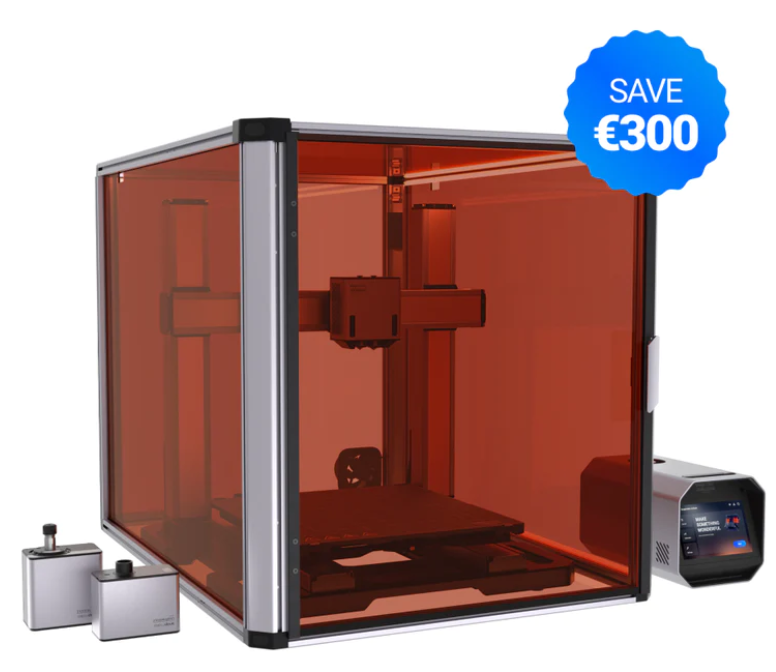Snapmaker is the first new printer to break through to the masses successfully. First, the Snapmaker Original provided a multi-purpose tool for makers and became the third-most supported tech project in Kickstarter history.
The introduction of Snapmaker 2.0, the most financially successful tech project on Kickstarter, then topped this. This 3-in-1 caught the attention of mainstream tech media—unusual for a 3D printer.
The first Snapmaker, now referred to as the Snapmaker Original, demonstrated that such a device didn’t have to cost a fortune. The Snapmaker 2.0 is all about improvement and broadening the range of potential applications for form factors that were once just teased.
Late in 2021, Snapmaker discreetly released changes to its hardware. The Snapmaker 2.0 A350T bundle is a brand-new model that is pertinent to this study and adds significant design upgrades to the A350, including overall usability and, in particular, 3D printing performance.
The Snapmaker 2.0 A350T bundle unboxing is a unique experience in and of itself. Numerous smaller boxes with attractive labels can be found inside the delivery box. So you can tell right away that you are opening a premium machine.
You receive everything you need to set up your printer with Snapmaker 2.0. You also receive a USB stick, side cutters, a deluxe screwdriver with swappable heads, a metal scraper, a spare hot end, and a toolbox full of supplies for building and maintaining the printer.
Like no other hobby-grade 3D printer we’ve encountered, the Snapmaker 2.0 A350T bundle boasts an amazing design. It is entirely built of aluminum alloys, and all its moving parts are completely encased to protect them from the dust that the CNC module may produce. Although it will undoubtedly make maintenance more difficult, during our testing, it could be tuned.
The device is supported by a substantial baseplate and has an independent power module. If you want to add an optional enclosure, this enables the power to remain cool outside of it. A 5-inch Android tablet on a wire with a magnet that enables it to attach to a holder at the front of the device serves as the touch screen.
It has a dual Y axis in addition to a dual Z axis. This machine has no belts; inside each “linear module” are a stepper motor and a screw that has been generously lubricated.
Four screws are used to attach each of the three tool heads to the X gantry. The 3D printer head is a small direct drive with a maximum temperature of 275 °C. The laser is a low-power, 1.6-watt diode that can cut through incredibly thin wood but is primarily utilized for etching. The ER11 collet on the CNC module has a spindle speed range of 6000–12,000 RPM and is compatible with common third-party bits. It can cut softer stones, acrylic, and wood.
The enclosure that comes with the Snapmaker 2.0 A350T bundle includes an open bottom and five laser-safe acrylic sides. Slider panels on the front and right side of the machine provide access. The touchpad has a cutout in the front door, and the spool holder mounts to the back outside corner. In addition, the enclosure has a ventilation fan and LED lights that hook into the control strip of the Snapmaker and are controlled by the touchpad.
The Luban software that is part of all Snapmaker 3D printers has three generic material profiles for PLA, ABS, and PETG in the 3D printing section.
